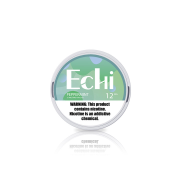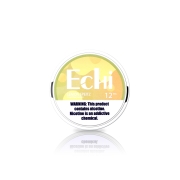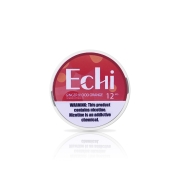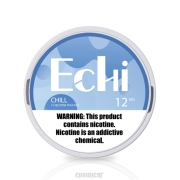How Many Pouches Are in Grinds? A Comprehensive Guide for Industry Stakeholders
As the oral pouch market continues to diversify, caffeine-based alternatives like Grinds have gained significant attention among international buyers, OEM brands, and distributors seeking non-nicotine functional products. This FAQ-style guide addresses a commonly asked question—how many pouches are in Grinds?—while offering broader insights into manufacturing, product variations, equipment similarities with nicotine pouch production, and supplier selection strategies.
Understanding the Market: Caffeine Pouches and Functional Alternatives
The rise of caffeine-infused pouches is part of a broader shift in consumer preferences away from combustibles and stimulants in liquid form. Originally designed as a substitute for chewing tobacco, products like Grinds have carved out their own niche among fitness enthusiasts, coffee drinkers, and professionals looking for a clean energy boost without the jitters or mess of traditional coffee.
Caffeine pouches mirror the trajectory of nicotine pouches—both have become mainstream due to their portability, discretion, and targeted functionality. At the heart of this growth is a demand for clean, measurable energy or nicotine intake without the social or regulatory baggage of smoking or vaping.
As this category matures, white-label caffeine and nicotine pouch solutions are allowing distributors to enter the market quickly under their own branding, further accelerating product development cycles and margin potential.
How Are Grinds Made? A Look into Pouch Manufacturing
Grinds pouches are formulated using a similar process to nicotine pouches, making them a relevant comparison for businesses already familiar with the oral nicotine industry.
Ingredient Blending and Base Formulation
Grinds are made from finely ground coffee, natural or artificial flavorings, and food-safe binders. Much like nicotine pouch production—where pharmaceutical-grade nicotine is combined with cellulose fibers and sweeteners—Grinds rely on tightly controlled blending processes to ensure consistency in caffeine dosage, taste, and texture.
Automation plays a key role in modern manufacturing. Leading producers use precision blending equipment that can scale from pilot runs to full commercial batches while maintaining flavor uniformity and regulatory compliance.
Pouch Formation and Assembly
The processed blend is portioned and filled into pouches—typically made from moisture-resistant, food-grade fiber mesh. These pouches are then heat-sealed and packed into tins using high-speed machinery originally developed for nicotine pouch production.
Standard Pouch Count in Grinds
Most Grinds products contain 18 to 20 pouches per can, depending on the flavor line and packaging format. This standardized count ensures that consumers can easily track their usage and reinforces the product’s convenience-focused positioning.
Nicotine pouches, by contrast, range more widely—some cans contain 15, others up to 30 pouches—due to varying market regulations and user preferences. OEM buyers planning to cross-launch caffeine and nicotine pouches can use similar equipment setups for both formats.
Differentiating by Flavor, Equipment, and Regional Standards
Flavor Innovation as a Brand Lever
Grinds has built its reputation on flavor diversity, with options ranging from classic coffee roast to dessert-inspired offerings like Mocha or Cinnamon Roll. These flavor-forward experiences resonate with users seeking indulgence alongside functionality.
This mirrors trends in the nicotine pouch segment, where fruit, mint, and hybrid flavors dominate. Brands working with experienced manufacturers can access custom flavor development services to localize offerings by region or consumer profile.
Equipment Compatibility Across Pouch Categories
Since caffeine and nicotine pouches share a similar physical format and production process, suppliers with expertise in nicotine bag manufacturing—such as Snuff Factory—are well-positioned to serve both markets. Their facilities typically feature high-output production lines with integrated quality control, filling accuracy systems, and adjustable pouch size capabilities.
Market Origin and Compliance Considerations
Grinds is produced in the U.S., where food safety and labeling regulations are strict. For nicotine pouches, many top-tier products originate in Scandinavia, where oral tobacco alternatives have a long history. OEM buyers must assess a supplier’s compliance readiness across geographies, particularly when launching in regulated regions like the EU, U.S., or Middle East.
Choosing the Right Supplier for Pouch Production
Whether entering the caffeine pouch market or extending into nicotine alternatives, success hinges on aligning with a manufacturer that offers expertise, customization, and scalability.
1. Proven Manufacturing Experience
Suppliers like Snuff Factory bring deep experience in oral pouch technologies, from nicotine to caffeine. Their operations are optimized for consistent pouch weight, moisture retention, and shelf stability—key factors for product quality and brand integrity.
2. White-Label and Customization Support
For distributors aiming to build proprietary brands, white-label partnerships are essential. A supplier that offers custom flavor profiles, pouch strengths, and branded packaging can help you move faster to market and build loyalty through product differentiation.
3. Scale and Supply Chain Agility
Look for suppliers that can handle volume ramp-ups without quality degradation. Facilities with modular production capabilities and modern machinery can adapt quickly to shifting market demands or new product lines, whether caffeine or nicotine based.
4. Certification and Global Compliance
Ensure your manufacturer adheres to international standards—such as ISO, FDA (for food-grade caffeine pouches), and TPD (for nicotine pouches). Transparent documentation and batch traceability are non-negotiable for market entry and customer trust.
Final Considerations for Distributors and OEM Buyers
As demand for functional pouches grows, caffeine-based products like Grinds present a low-barrier, high-margin opportunity. But long-term success requires strategic planning:
-
Leverage flavor innovation: Consumers expect more than just utility—they want a sensory experience. Develop a broad flavor portfolio to cater to multiple user segments.
-
Use nicotine pouch infrastructure: If you’re already in the nicotine space, caffeine pouches are a natural extension using the same manufacturing lines and packaging formats.
-
Prioritize supplier relationships: Manufacturers like Snuff Factory can help you build reliable, scalable operations from day one.
By understanding production specifics, supplier dynamics, and regional preferences, stakeholders can confidently enter or expand within the caffeine pouch market. Whether mirroring Grinds or creating something entirely new, a thoughtful approach to manufacturing and branding will be the difference-maker in this rapidly evolving sector.










Leave a Reply
Want to join the discussion?Feel free to contribute!